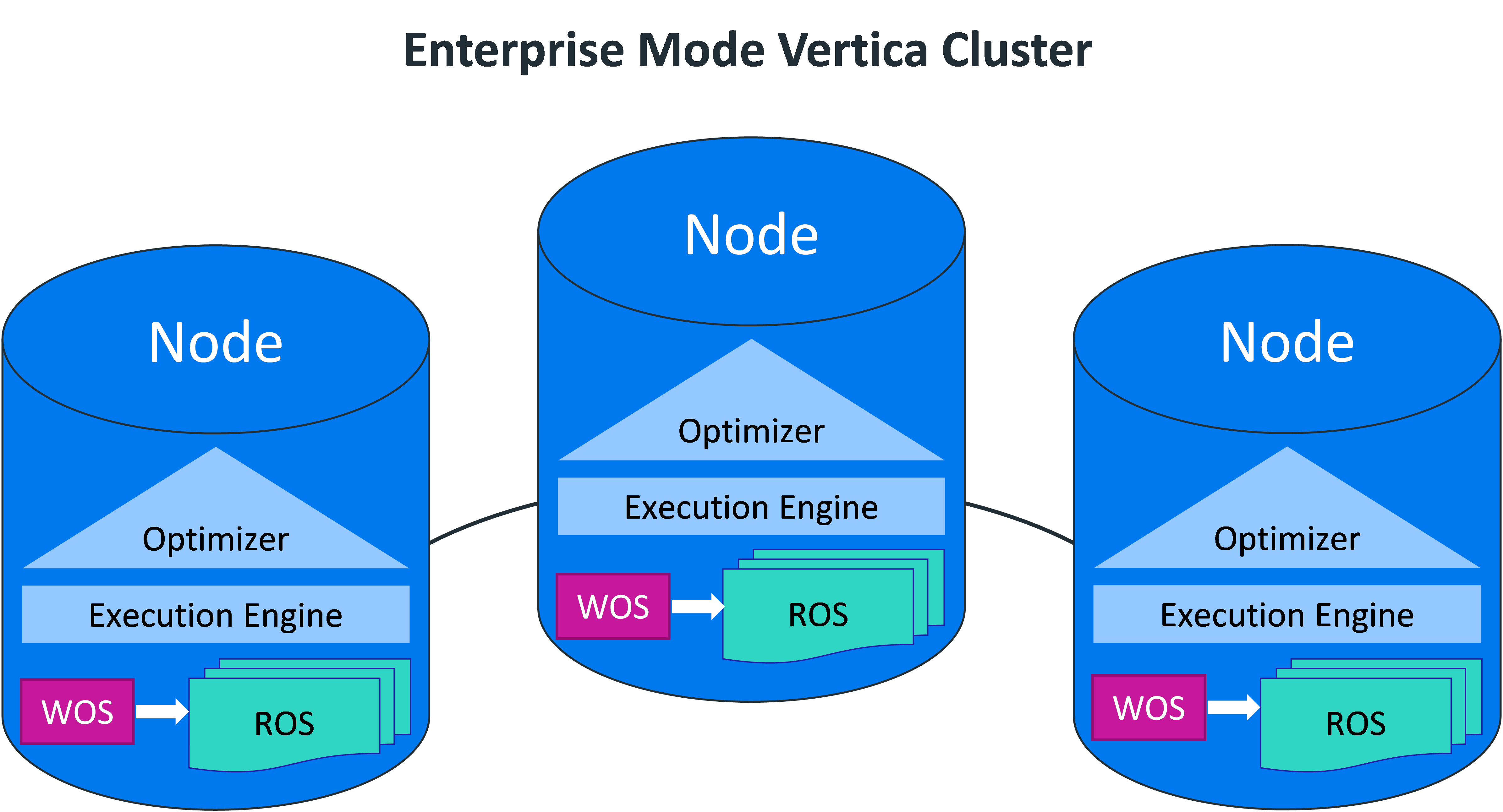Enterprise Mode Concepts
In an Enterprise Mode Vertica database, the physical architecture is designed to move data as close as possible to computing resources. This architecture differs from a cluster running in Eon Mode which is described in Eon Mode Concepts.
The data in an Enterprise Mode database is spread among the nodes in the database. Ideally, the data is evenly distributed to ensure that each node has an equal amount of the analytic workload.

Hybrid Data Store
When running in Enterprise Mode, Vertica stores data on the database in two containers:
- Write Optimized Store (WOS) - stores data in memory without compression or indexing. You can use the INSERT, UPDATE, and COPY statements to load data into WOS.
- Read Optimized Store (ROS) - stores data on disk. The data is segmented, sorted, and compressed for high optimization. You can load data directly into the ROS using the COPY statement.
The WOS exists to prevent many small data loads (often called trickle loads) from forcing Vertica to create many small ROS containers. A large number of small ROS containers are less efficient than larger containers.
The Tuple Mover moves data from the WOS (memory) to the ROS (disk) using the following processes:
- Moveout copies data from the WOS to the Tuple Mover and then to the ROS; data is sorted, encoded, and compressed into column files.
- Mergeout combines smaller ROS containers into larger ones to reduce fragmentation.
You usually use the COPY statement to bulk load data. It can load data into WOS, or load data directly into the ROS. For more on load options, see Choosing a Load Method.
Data Redundancy
In Enterprise Mode, each node of the Vertica database stores and operates on data locally. Without some form of redundancy, the loss of a node would force your database to shut down, as some of its data would be unavailable to service queries.
You usually choose to have your Enterprise Mode database store data redundantly to prevent data loss and service interruptions should a node shut down. See K-Safety for details.